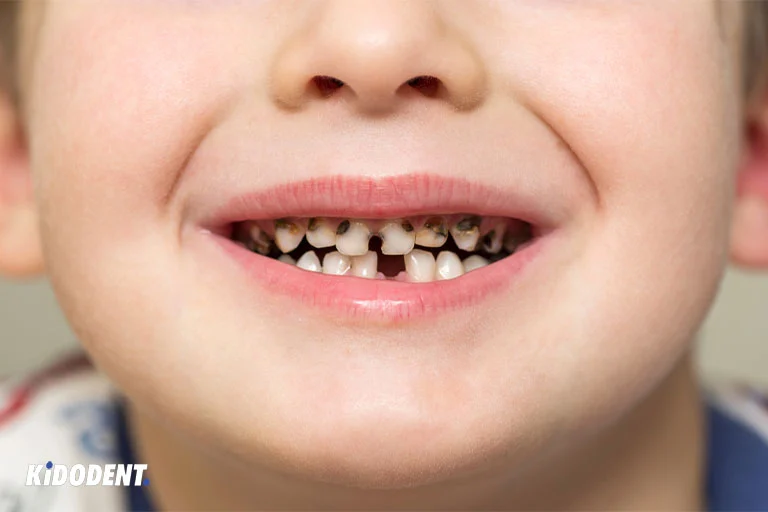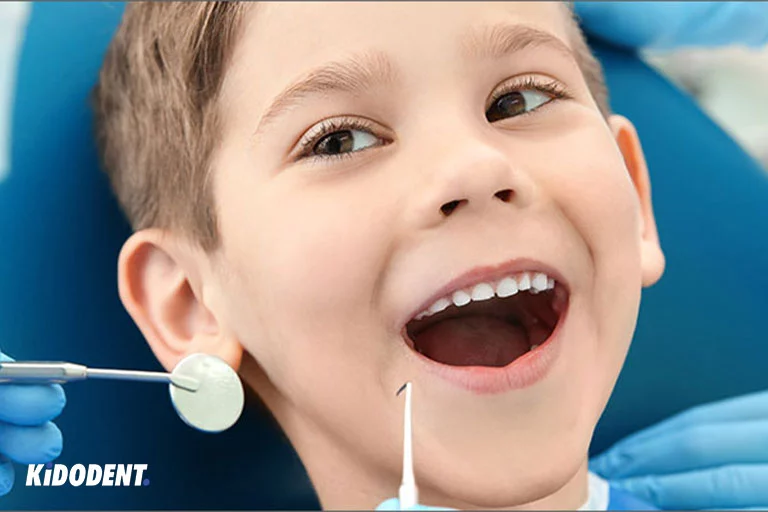There are common dental problems that can affect the future dental health of your child, ranging from tooth decay and bad breath to prolonged thumb sucking. Parents should realize the importance of dental health and proper oral care to prevent major dental issues later. A simple case of tooth decay can eventually penetrate deep into the child’s teeth, causing infection or the loss of the tooth. On the other hand, thumb sucking habit can change a child’s normal teeth and jaw pain development. Here are the most common dental problems that can occur in children:
Tooth decay
Tooth decay is a common problem among children that can be prevented if diagnosed early in life. Pediatric dentists can predict a lot of future problems in children. They can help parents by giving instructions and taking preventive measures.
Bad breath
Halitosis, to put it simply bad breath, is everybody’s nightmare. Seriously, children face this problem because of the type of diets, tooth decay, or other factors.
Not to mention some basic factors, the greatest of these can be bacteria in the mouth and throat. Since bacteria feed on food particles, the produced sulfur and acid are chemicals to blame for the foul breath.
The congestion of bacteria in the mouth can cause many problems like gum disease and poor oral health. Other diseases such as chronic sinusitis, diabetes, and digestive diseases can have a role in causing bad-smelling breath.
Sometimes taking some medications or drugs can cause dryness in the mouth. If there is an increase in bacterial activities, bad breath can occur.
Oral hygiene is the best treatment for bad breath, which is a challenging problem for pediatric dentists. Brushing teeth, appropriate healthy diets, and using mouthwash can be practical methods to try.
Teeth sensitivity
Another common dental problem among children is teeth sensitivity. If you feel any pain by eating hot foods, drinking cold drinks, or breathing in cold air, you might have sensitivity in your teeth.
Teeth sensitivity has something to do with the delicate nature of primary teeth in children or mainly because of enamel thin layers on the primary teeth. Plaque formation and acidity can easily destroy the thin enamel surface.
With eroded enamel and receding gums comes greater exposure of the root’s tooth, causing teeth sensitivity.
To prevent teeth sensitivity in children, pits and fissure sealants or fluoride therapy are treatment choices dentists can recommend.
Thumb sucking
Children get into the habit of thumb sucking in their early years of life. In fact, it works out as a relaxation mechanism to stay away from stress. They tend to do that while they are 2 or 3 years old, but if the habit continues as they age, it can impact the children’s dental health negatively.
Thumb sucking causes bite problems in the teeth and jaws. Open bite is one of the common types of malocclusion that can occur if thumb sucking continues, which needs orthodontic treatments to fix. Speech disorder is also a negative side effect of thumb sucking.
Try to visit a pediatric dentist if your child doesn’t stop this habit after 4 years of age.
Gum disease
Gum disease begins with inflammation in the gums. It is called gingivitis and occurs due to poor oral health.
Gingivitis is the most common gum problem that could occur in children. It appears as swollen gums, slight pain, red gums, and bleeding in the gums
With simple ways like brushing teeth daily, using dental floss, and regular maintenance appointments with the dentist, gum disease can be prevented. For serious cases, the pediatric dentist may prescribe deep scaling for the child.
Bruxism (grinding your teeth)
When your child consciously or asleep, intentionally or not grinds their teeth, we can say it is a sign of a condition scientifically called bruxism. It is another mischief that pediatric dentists need to fight off.
It is estimated that 2 or 3 out of 10 children have bruxism. There are some reasons why children grind their teeth, such as anger, stress, hyperactivity, jaw, and teeth-to-teeth misalignment.
As children grow older, this bad habit will stop. If you see that teeth grinding continues, you should know that it can destroy primary and even permanent teeth. It causes pain in the jaw muscles and in the teeth. Deteriorating enamel, headache, and teeth sensitivity are symptoms of chronic teeth grinding.
Having a consultation with an orthodontist can help you find a way to reduce the degree of tooth grinding or even stop that.
Oral lesions (mouth ulcer or canker sore) are common problems among children
These ulcers occur in the oral cavity, tongue, and gums. It has usually a brown or white color surrounded by red around the spot.
These lesions don’t last and children may experience that at times. But with these ulcers in the mouth, children may face some challenges in eating and tend to react to these small wounds. Lesions are the result of the following factors:
- Types of diets
- Trauma or stress
- Infections
- Malnutrition
- Allergies
Also, wrong ways of brushing teeth, biting lips, gums or tongue can lead to much worse conditions of the lesions. Remember:
- To promote the healing effects, provide your child with mild-tasting foods and drinks
- Use toothpaste without sodium lauryl sulfate(SLS)
- Smooth brushes are great and there is no irritation to the gums or teeth during brushing
- Use anti-bacterial mouthwash
- To relieve the symptoms in children, use topical medications.

Primary teeth falling off and the problems that occur
For most children seeing their primary teeth falling is sort of exciting. In a natural process, these deciduous (primary) teeth fall off and are replaced by permanent teeth.
The first primary teeth fall around 6 years of age, but molar teeth may withstand until the ages of 10 to 12, and then begin to fall. Overall, with the coming of 13 years of age, there should be 28 permanent teeth and no baby teeth.
This process of falling is painless for most children (lucky ones), but sometimes, with the delay or early primary teeth falling, pediatric dentistry is there to face some problems again!
Therefore, if there are signs of pain while losing their baby teeth, consult with your pediatric dentist on that or related cases of this incident.
Over-retained primary teeth
If there is a delay in primary teeth falling, it causes problems with the eruption of the permanent teeth.
For example, permanent teeth erupt but there is one remaining baby tooth. It signifies that there is no permanent tooth to come out, which is why the baby tooth is not falling.
Pediatric dentists may need to pull out the tooth or, with the eruption of permanent teeth, orthodontists use special techniques to guide the growth of the permanent teeth.
Most children are afraid of visiting the dentist
The fear is not directly linked to teeth or any other dental problems. By the way, this fear can impact children’s behavior during appointments with the dentist.
This creates a monstrous impression for children while going to the dentist and creates challenges during the treatment procedures.
Children should have a comforting and friendly atmosphere in order for serious procedures like root canal treatment (endodontic therapy), tooth extraction, filling, etc. to be done.
